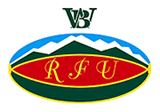
While now a rugby backwater, in its heyday Wairarapa was a provincial powerhouse. Between 1927 and 1929 Wairarapa defended the coveted Ranfurly Shield 12 times during two tenures. The Wairarapa Rugby Union, based in Masterton, was formed in 1886. A separate Pahiatua-based Bush Union was established in 1890. In 1971 the two unions amalgamated to form the Wairarapa Bush Rugby Union.
When a National Provincial Championship (NPC) was established in 1976 Wairarapa Bush was placed in the second division. The province was promoted to the first division in 1981 but relegated in 1987 before eventually falling into the third division. When the provincial competition was restructured in 2006 Wairarapa Bush was placed in the semi-professional Heartland Championship. It won this competition (and the Meads Cup) that year, while in 2010 it took out the Lochore Cup contested by the fifth- to eighth-ranked Heartland teams. Along with East Coast, Poverty Bay, Hawke’s Bay, Wanganui, Manawatu, Horowhenua-Kapiti and Wellington, Wairarapa Bush is part of the Hurricanes Super Rugby franchise.
Highlights of Wairarapa rugby
Bush was one of the smallest rugby unions in the country. It challenged – unsuccessfully – for the Ranfurly Shield on six occasions between 1927 and 1968. Its closest effort was a 22–9 defeat by Wellington in 1957. Bush had a taste of international rugby in 1964 when they played Australia at Pahiatua, losing 19–13. Athol (‘Tonk’) Mahoney was Bush’s only All Black. He played for his country in 1929 and between 1934 and 1936. Another Bush player of note was the Second World War hero Keith Elliott. He played 11 first-class games for Bush during the 1930s but is best remembered for his exploits during the Second World War. Elliott was awarded a Victoria Cross for his bravery at El Ruweisat Ridge in North Africa in 1942.
The Wairarapa union enjoyed greater Ranfurly Shield success. A 15–11 victory over Hawke’s Bay on 3 June 1927 ended Hawke’s Bay’s record-breaking tenure which had begun in 1922. Wairarapa had been thrashed 77–14 by Hawke’s Bay the season before. In 1927 the side was considerably strengthened by the arrival of Bert Cooke and ‘Bull’ Irvine – from the Bay. Near neighbours Bush were seen off 53–3 in Wairarapa’s first defence, and then Hawke’s Bay arrived in Masterton for a much anticipated re-match. Though Hawke’s Bay won the ‘Battle of Solway’, Wairarapa retained the shield. Wairarapa challenged the eligibility of Hawke's Bay's Wattie Barclay to play in the match as he did not meet the necessary residential qualification of having resided in the Bay for the minimum three week period. He had been back for only two so the NZRFU ruled him ineligible and awarded the match to Wairarapa. The reprieve was short-lived. In its next defence Wairarapa was defeated 18–16 by Manawhenua (a combined Manawatu-Horowhenua team).
The following season Wairarapa reclaimed the shield with an 8–7 victory over Canterbury in a mid-week fixture that attracted 20,000 fans. The main drawcard was undoubtedly the brilliant midfield back Bert Cooke, but the Wairarapa side included two other members of the 1924 All Black ‘Invincibles’, ‘Bull’ Irvine and Quentin Donald. Wairarapa made eight successful defences before losing 19–16 to Southland in the last challenge of the 1929 season. This result was unexpected. Southland’s form had been poor and Wairarapa had been further strengthened by two more defectors from Hawke’s Bay, All Blacks Tommy Corkill and Jimmy Mill. In 1950 Wairarapa tasted fleeting Ranfurly Shield success, defeating Canterbury 3–0 at Lancaster Park but losing 17–14 to South Canterbury in their first defence a fortnight later.
Following the amalgamation Wairarapa-Bush had made eight unsuccessful challenges for the Ranfurly Shield by 2009. The increasing gulf between the larger unions and the minnows has been all too evident. A 96–10 mauling at the hands of Canterbury in 2006 was followed by an almost equally emphatic 90–19 loss to Wellington in 2009.
Gary McGlashan, a member of Wairarapa-Bush's foundation squad, holds the record for the most appearances, playing 132 games between 1971 and 1983. P. Harding-Rimene scored a record 561 points between 1999 and 2008.
Brian Lochore
Wairarapa’s strength in the late 1920s was reflected by the fact that nine players of that era pulled on the black jersey. But of the 29 All Blacks from Wairarapa, Bush or Wairarapa-Bush, one name stands out above all others: Brian Lochore.
Wairarapa born and bred, Lochore won distinction as a player and administrator at school, club, provincial and national level. Colin Meads believed that at the peak of his career between 1966 and 1969 Lochore was 'everything I would want in a number 8'. Furthermore Meads believed that the self-effacing Lochore was as effective in his captaincy as the highly acclaimed Wilson Whineray. He became an All Black selector in 1983 and coached the national team from 1985 to 1987, culminating with home success in the 1987 World Cup final. Lochore was inducted into the International Rugby Hall of Fame in 1999 and knighted the same year.
Lochore’s iconic status within New Zealand rugby has been acknowledged by the naming of one of the two cups contested in the Heartland Championship in his honour.
Tell us your Wairarapa rugby stories
Add your story to the Community contributions section below. We're also keen to get more regional rugby images - please email us at [email protected] if you can help.


Community contributions